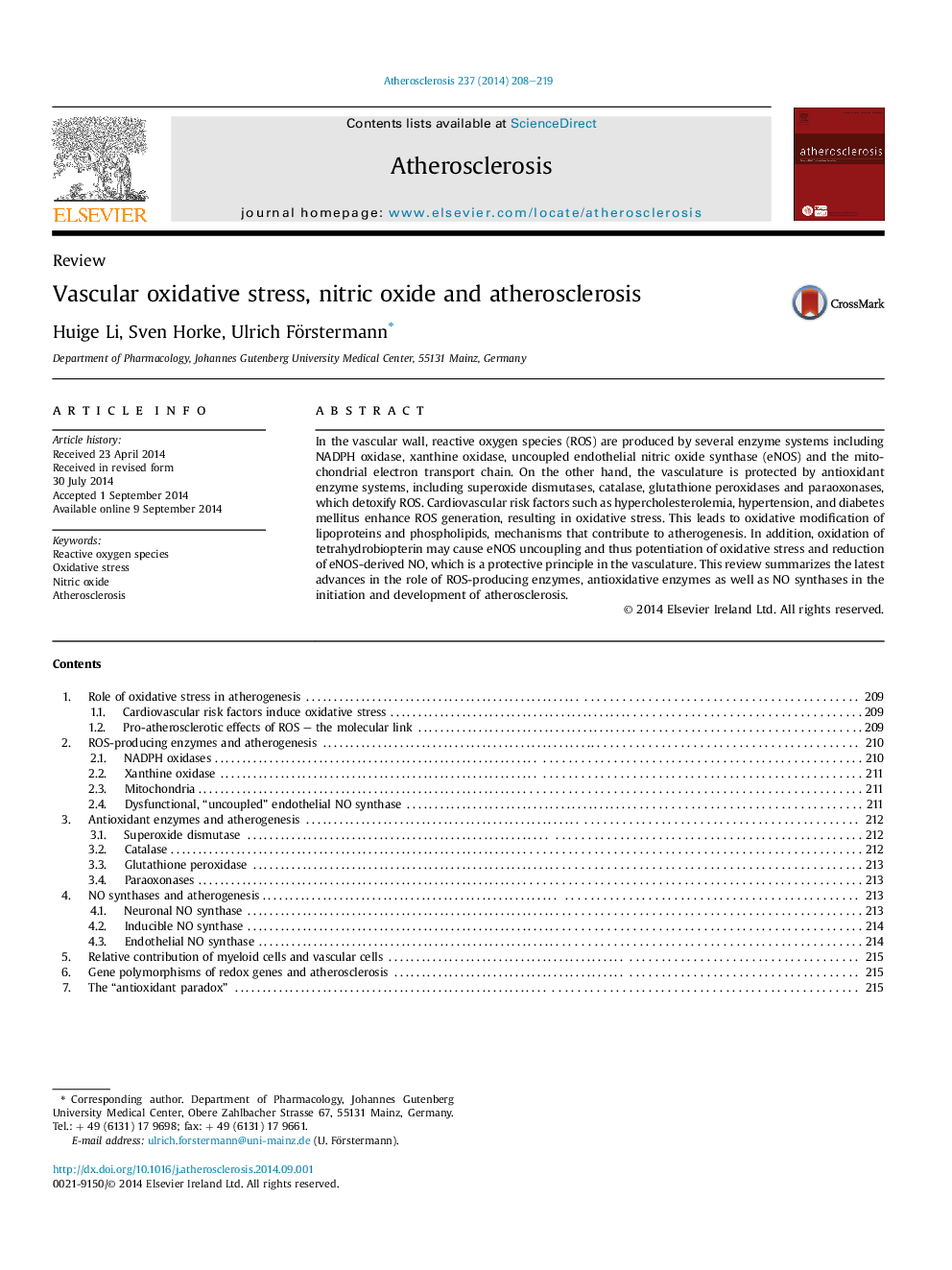| کد مقاله | کد نشریه | سال انتشار | مقاله انگلیسی | نسخه تمام متن |
|---|---|---|---|---|
| 5945004 | 1172348 | 2014 | 12 صفحه PDF | دانلود رایگان |
• Cardiovascular risk factors induce oxidative stress.
• Oxidative stress is implicated in atherogenesis development.
• Superoxide-producing enzymes promote atherogenesis, whereas antioxidant enzymes protect against atherosclerosis.
• NO derived from nNOS and eNOS represents an anti-atherosclerotic factor, whereas iNOS seems to be playing a pro-atherogenic role.
In the vascular wall, reactive oxygen species (ROS) are produced by several enzyme systems including NADPH oxidase, xanthine oxidase, uncoupled endothelial nitric oxide synthase (eNOS) and the mitochondrial electron transport chain. On the other hand, the vasculature is protected by antioxidant enzyme systems, including superoxide dismutases, catalase, glutathione peroxidases and paraoxonases, which detoxify ROS. Cardiovascular risk factors such as hypercholesterolemia, hypertension, and diabetes mellitus enhance ROS generation, resulting in oxidative stress. This leads to oxidative modification of lipoproteins and phospholipids, mechanisms that contribute to atherogenesis. In addition, oxidation of tetrahydrobiopterin may cause eNOS uncoupling and thus potentiation of oxidative stress and reduction of eNOS-derived NO, which is a protective principle in the vasculature. This review summarizes the latest advances in the role of ROS-producing enzymes, antioxidative enzymes as well as NO synthases in the initiation and development of atherosclerosis.
Journal: Atherosclerosis - Volume 237, Issue 1, November 2014, Pages 208–219
